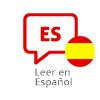Summary
The aim of our study was to determine the efficacy of three different adsorbents, inorganic (modified zeolite), organic (esterified glucomannans) and mixed (inorganic and organic
components, with the addition of enzymes), in protecting
broilers from the toxic effects of Ochratoxin A in feed.
- Animals
- Broilers were fed diets
containing 2 mg/kg
of Ochratoxin A (OTA)
and supplemented
with adsorbents at the
recommended concentration
of 2 g/kg for 21 days.
The presence of OTA led to a notable reduction in body weight, lower weight gain, increased feed conversion and induced histopathological changes in the liver and kidneys. The presence of inorganic, organic and mixed adsorbents in contaminated feed only partially reduced the negative effects of OTA on the broiler performances:
- Body weight: broilers that were fed with adsorbent-supplemented
feed reached higher body weight in
comparison to the group that only received OTA.
- +17,96% with the treatment with the inorganic adsorbent
- +19,09% with the treatment with the organic adsorbent
- +13,59% with the mixed adsorbents
- Feed consumption: the presence of adsorbents partially
alleviated the reduction in feed consumption.
- +22,68% with the treatment with the inorganic adsorbent
- +12,91% with the treatment with the organic adsorbent
- +10,59% with the mixed adsorbents
- Feed conversion: a similar effect was observed with feed conversion.
The applied adsorbents have also reduced the intensity
of histopathological changes caused by OTA; however,
they were not able to prevent their onset.
After the withdrawal of the
toxin and adsorbents from
the feed (21–42 days), all
previously observed disturbances
in broilers were reduced, but
more remarkably in broilers
fed with adsorbents.
Authors
Jelena Nedeljković-Trailović1, Saša Trailović1, Radmila Resanović1, Dragan Milićević2, Milijan Jovanovic1, and Marko Vasiljevic3
1Faculty of Veterinary Medicine, University of Belgrade, Belgrade (Serbia) 2Institute of Tecnology and Hygiene , Belgrade (Serbia) 3 PATENT CO. Mišićevo (Serbia)
1Faculty of Veterinary Medicine, University of Belgrade, Belgrade (Serbia) 2Institute of Tecnology and Hygiene , Belgrade (Serbia) 3 PATENT CO. Mišićevo (Serbia)




 Micotoxicosis prevention
Micotoxicosis prevention